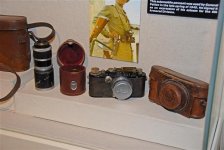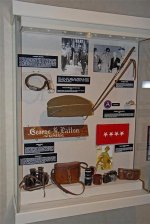It wasn't, it was hit several times according to the former employee I stayed with in Wetzlahr, and in the last weeks of the war it was occupied by the British army , including Dr Stewart Bell, who used to test lenses for the AP (he did the first tests of the CV lenses ). Whilst they were there in control they were shelled by the US army, a tale that Dr Bell loved to retell!!
Is he still alive? I had read an interview with an English Officer who mentioned him and also had some colorful stories about as they came to the factory and found tables full of Grey IIIC K`s and Chrome IIId`s
(the British were the first to Wetzlar, BUT THEY DIDN`T STAY) , to the best of my knowledge they did early postwar tests and also took in some cameras, but they left the majority of the production intact, while the US Army were to occupy the zone and they were the first to buy cameras directly from the factory, once the war was declared over, up till then the production was held in limbo until the capitulation, I`m sure before then some of the victors had sticky fingers and helped themselves to some equipment ......
But, on the most part, everything was done honorably at Leitz even with the Surrender and Forced Occupation, camera equipment transactions/sales were done 100% legal, with full bills of sale drawn on Reichmarks, paid in full to the company and cameras delivered out to the US Forces starting officially on May 8th 1945,*
VE Day*
In early May 1945, a Brigadier General of the US Army Signal Corps put in an order for the remaining 500
"Grey" IIIC K cameras and the rest is history........
😉
Tom
PS: John, your in Scotland, do you know anything about the
FAMOUS 1960`s and 70`s Leica restorer
George Gordon Carr of Renfrewshire?



